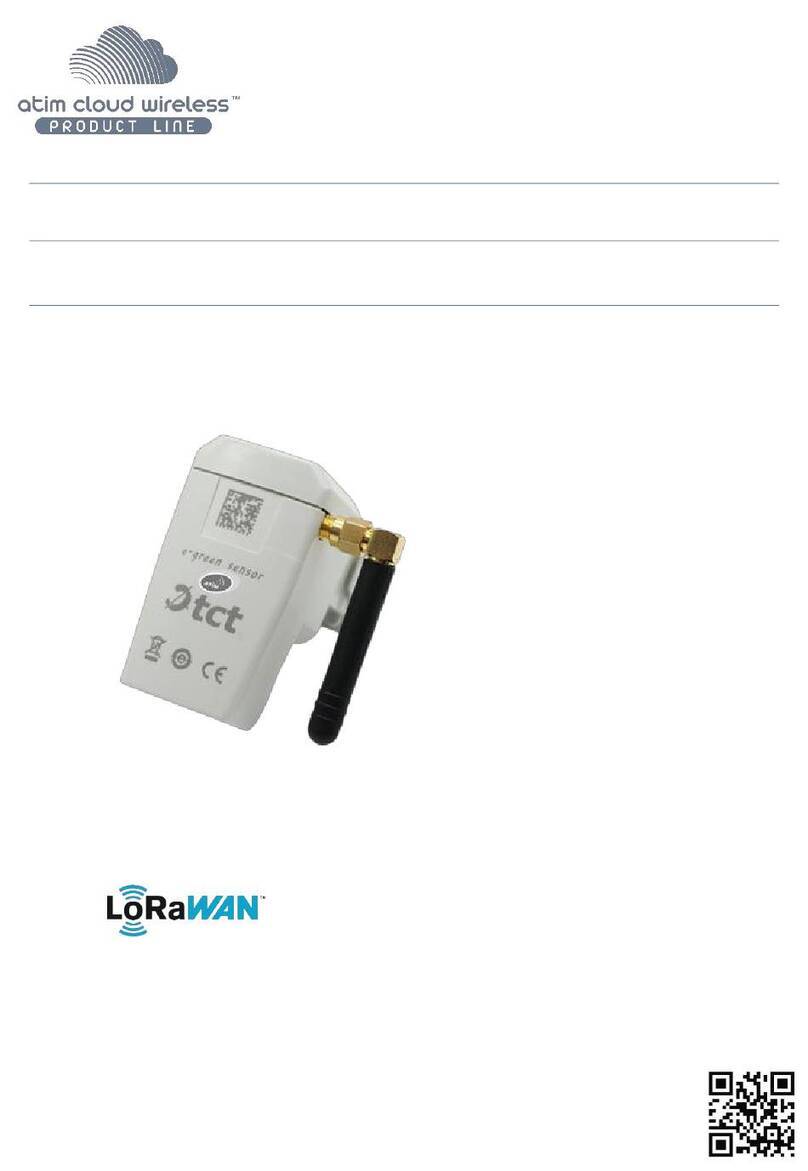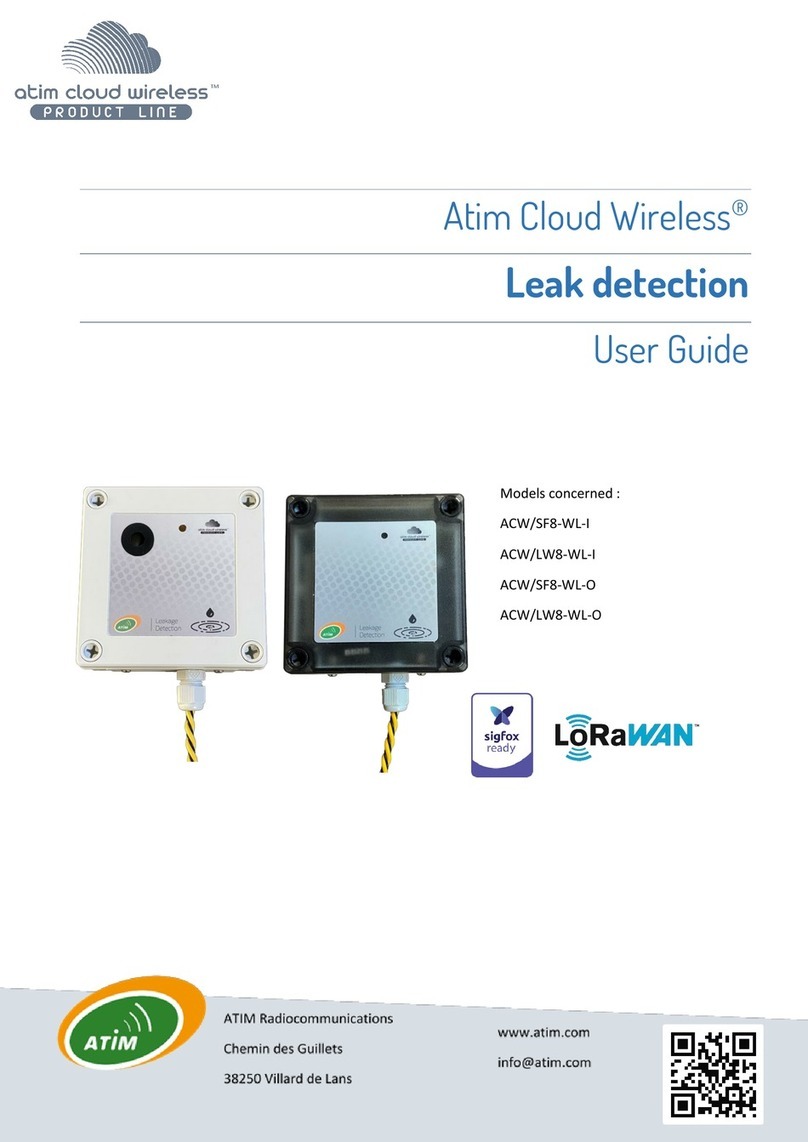2
ATIM_ACW-THX_UG_EN_V1.1
Table of contents
THIS USER GUIDE IS APPLICABLE TO THE FOLLOWING REFERENCES.............................................................................................. 4
VERSION HISTORY OF THIS DOCUMENT ..................................................................................................................................... 4
DISCLAIMER ............................................................................................................................................................................... 5
TRADEMARKS AND COPYRIGHTS................................................................................................................................................ 5
DECLARATION OF CONFORMITY................................................................................................................................................. 5
ENVIRONMENTAL GUIDELINES................................................................................................................................................... 6
A.ENVIRONMENT................................................................................................................................................................................ 6
B.RADIO............................................................................................................................................................................................ 6
TECHNICAL CHARACTERISTICS .................................................................................................................................................... 7
A.PRODUCT ....................................................................................................................................................................................... 7
B.FUNCTIONS OF THE INTEGRATED SENSORS............................................................................................................................................. 7
CASE........................................................................................................................................................................................... 8
A.DIMENSIONS ................................................................................................................................................................................... 8
B.FIXING ........................................................................................................................................................................................... 8
C.INSTALLATION.................................................................................................................................................................................. 8
D.IDENTIFICATION............................................................................................................................................................................... 9
OPERATION ...............................................................................................................................................................................10
A.MODE OF OPERATION..................................................................................................................................................................... 10
B.PUTTING THE PRODUCT INTO OPERATION ............................................................................................................................................ 11
C.SENDING A TEST FRAME ................................................................................................................................................................... 12
D.PUTTING INTO STORAGE MODE ......................................................................................................................................................... 12
E.RADIO MODULE ACTIVITY ................................................................................................................................................................. 12
F.EXCEEDING THE THRESHOLD.............................................................................................................................................................. 13
G.SUBSTITUTION TO THE MAGNET ........................................................................................................................................................ 13
H.BATTERY PASSIVATION..................................................................................................................................................................... 13
ACW CONFIGURATOR................................................................................................................................................................13
A.COMPATIBLE CONFIGURATOR VERSIONS.............................................................................................................................................. 13
B.ACW-THW CONFIGURATION.............................................................................................................................................................. 15
Transmission period and samples in the frame........................................................................................................................ 15
Lifetime frame period............................................................................................................................................................... 17
Frame timestamp ..................................................................................................................................................................... 17
Radio module configuration..................................................................................................................................................... 18
Product clock ............................................................................................................................................................................ 19
Product versions ....................................................................................................................................................................... 19
Sensor configuration ................................................................................................................................................................ 20
Vibration detection ...................................................................................................................................................................................20
Temperature and humidity .......................................................................................................................................................................20
Configuration validation............................................................................................................................................................................20
C.FACTORY CONFIGURATION................................................................................................................................................................ 21
D.ACW UPDATE................................................................................................................................................................................. 22
UPLINK FRAME FORMAT ...........................................................................................................................................................23
A.DESCRIPTION ................................................................................................................................................................................ 23
Classic frame ............................................................................................................................................................................ 23
The different types of frames ................................................................................................................................................... 24
Measurement frame ................................................................................................................................................................ 24
Measurement alert frame ........................................................................................................................................................ 26





























